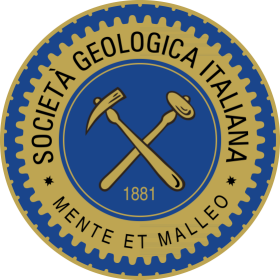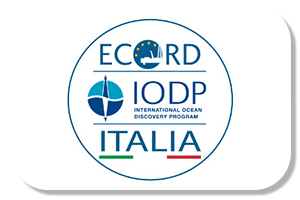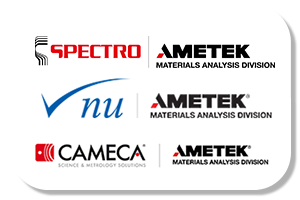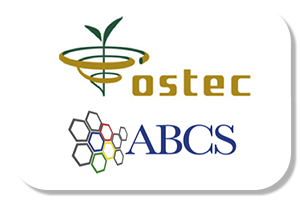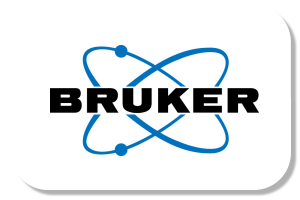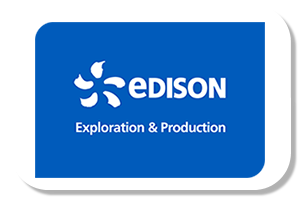
Questa edizione del congresso congiunto SIMP-SGI-SOGEI 2019 propone un nuovo tipo di sessione denominata "Interactive Extended Session" (IES), ispirata alla "PICO" session dei congressi EGU, e mirata a integrare i vantaggi delle presentazioni orali e poster.
La sessione avrà luogo in uno spazio appositamente attrezzato (IES spot, Area Poster) con monitor di grandi dimensioni collegati a notebook. Ogni sessione inizierà con una prima fase nella quale tutti gli autori forniranno un quadro essenziale del proprio lavoro attraverso una presentazione orale “crazy presentation" della durata di 2 minuti. Gli autori potranno poi interagire direttamente con il pubblico mostrando il proprio lavoro sottoforma di massimo 5 slides presso la postazione monitor loro assegnata. I file supportati in questo tipo di sessione, sia per la parte orale che per quella interattiva, possono essere presentazioni Power Point, filmati (.mov, .mp4, .mpeg), animazioni (.gif) o semplici PDF.
Le presentazioni IES devono essere predisposte in modo da soddisfare entrambi i requisiti, vale a dire il sommario iniziale di 2 minuti e la successiva presentazione piu' estesa.
Per eventuali richieste di chiarimenti riguardo le modalità delle presentazioni IES potete rivolgervi a Nadia Malaspina (Questo indirizzo email è protetto dagli spambots. È necessario abilitare JavaScript per vederlo.) e Sabrina Nazzareni (Questo indirizzo email è protetto dagli spambots. È necessario abilitare JavaScript per vederlo.)
Programma delle IES
17 Settembre 2019 [16.00 - 17.00] - Aula Centrale
- 2-12 Consani S.*, Giuli G., Martinelli A., Cardinale A.M., Trapananti A. & Carbone C. : Possible Rare Earth Element-induced structural modification in Layer Double Hydroxides: the case of synthetic woodwardite [Cu1-xAlx(SO4)x/2(OH)2?nH2O]
- 2-13 Fantini R., Quartieri S.*, Arletti R., di Renzo F., Fabbiani M., Morandi S., Martra G. & Vezzalini G. : Dehydration and Thermal stability of High-Silica Mordenite: In-Situ Synchrotron X-Ray Powder Diffraction Study
- 8-7 Brombin V.*, Bonadiman C., Jourdan F., Roghi G., Coltorti M., Webb L.W., Callegaro S., Bellieni G., De Vecchi Gp., Sedea R. & Marzoli A. : Deciphering a geological enigma: occurrence of intraplate magmatism at convergent plate boundaries
- 8-8 Velicogna M.*, Venier M., Brombin V. & De Min A. : Comparison among the volcanic complex of Gorski Kotar and lava flows from the Medvednica Mountains with the Triassic magmatism of the Dolomites, first results
- 10-13 Antonicelli M.*, Tribuzio R., Wu F.Y. & Liu T. : Origin of the peridotite-pyroxenite association from Rocca di Argimonia, Ivrea Mafic Complex (Ivrea-Verbano Zone)
- 20-13 Federico L.*, Maino M., Crispini L. & Capponi G. : Paleo-depth of fault activity: testing a method based on inversion of fault-slip data
- 24-14 Zucchini A.*, Cirilli S., Comodi P., Mitillo N., Lanzafame G. & Frondini F. : The influence of the dolomitization process on texture and porosity of carbonates
- 26-6 Severini E.*, Pinardi M., Racchetti E., Celico F. & Bartoli M. : Evidences of diffuse water and nitrate input via river-groundwater interactions in a regulated river: flood irrigation as main driver?
- 26-7 Stellato L.*, Allocca V., Arienzo M., Coda S., De Vita P., Di Rienzo B., D’Onofrio A., Ferrara L., Marzaioli F. & Trifuoggi M. : Multi-disciplinary study to characterize groundwater flow processes and quality in an agriculture impacted volcanic-sedimentary coastal aquifer in the archaeological site of Cumae (Phlegraean Fields, southern Italy)
- 28-13 Bordoni M.*, Lucchelli L., Corradini B. & Meisina C. : Reconstruction of lithotechnical terrain units for the assessment of shallow landslides hazard in Oltrepò Pavese (northern Italy)
- 28-14 Giacomelli S.*, Lammoglia T. & Sgavetti M. : A SRTM-based geomorphometric analysis aimed at (neo)tectonics activity detection: a case study from an intracratonic area (Mato Grosso, Brazil)
18 Settembre 2019 [10.30 - 11.30] - Aula Centrale
- 1-13 Geddo Z.*, Mazzucchelli M.L. & Alvaro M. : Combining micro-tomography and finite element analyses for elastic geobarometry on real geological samples
- 1-12 Lorenzon S.*, Nestola F., Thomassot E., Prosperi L., Lorenzetti A., Alvaro M., Salvadego F. & Nimis P. : Super-deep diamond from Central African Republic
- 9-6 Malaspina N.* & Tumiati S. : Redox processes and the role of carbon-bearing volatiles at subduction zones: natural versus experimental perspectives
- 9-7 Tamburello G.* : The importance of direct gas flux measurements at active volcanoes for understanding the geochemical cycles in the subduction zones
- 12-12 Ferrari E.*, Montanini A., Secchiari A., Bosch D. & Cluzel D. : Pyroxenite diversity in the New Caledonia mantle sequence: a preliminary study
- 12-13 Mosconi A.*, Sanfilippo A., Liu C.Z., Salters V., Tribuzio R. & Zanetti A. : Isotopic heterogeneity of mantle melts migrating through the Lanzo South Ophiolite: a focus on Re-Os isotopes and PGE
- 12-22 Verhoest L., Brunelli D., Hemond C. , Bonatti E. , Ligi M. & Cipriani A. : Mantle source heterogeneity in the Equatorial Mid Atlantic Ridge: a multi-isotopic approach
- 13-18 Petroccia A.*, Carosi R., Montomoli C. & Simonetti M. : 1:25.000 structural map of Mamone in the northern of the Sardinian variscan basement
- 13-19 Zepeda-Martínez M.* & Martini M. : Tectono-sedimentary evolution of the Tlaxiaco Basin, southern Mexico: A key to understand the Jurassic structural history of Proterozoic and Paleozoic basement rocks of Mexico during Pangea breakup
- 18-6 Cerchiari A.*, Remitti F., Mittempergher S., Festa A., Lugli F. & Cipriani A. : Interrelated changes in fluid sources and stress field orientation during the seismic cycle reconstructed for an exhumed analogue of the subduction megathrust shallow portion
- 18-7 Pizzati M.*, Balsamo B. & Storti F. : Influence of accommodated displacement upon microstructural and petrophysical properties of deformation bands and gouges affecting faulted high-porosity siliciclastic sediments (Rocca di Neto fault zone, Crotone Basin, Italy)
- 23-6 Spreafico M.C.*, Sternai P. & Agliardi F. : Rock-slope failure after deglaciation: rapid response or progressive long-term evolution? Insights from numerical modelling
- 29-19 Di Martino R.M.R.*, Camarda M. & Gurrieri S. : The monitoring of hydrogen and carbon dioxide at Stromboli volcano
- 31-7 Magi F.*, Cabassi J., Capecchiacci F., Giannini L., Nisi B., Pandeli E., Rappuoli D., Tassi F., Venturi S. & Vaselli O. : Mercury in groundwater from the Mt. Amiata area (central Italy)
- 31-6 Petranich E.*, Pavoni E., Signore S. & Covelli S. : Mercury mobility in harbour sediments: evidence from selective sequential extraction and short-term microcosm resuspension experiments (northern Adriatic Sea, Italy)
19 Settembre 2019 [10.30 - 11.30] - Aula Centrale
- 5-16 Fioretti G.* & Campobasso C. : Petroarchaeometric investigation of building stones and mensiochronological analysis of masonry structures of the St. Maria Veterana archaeological site in Triggiano (Apulia, southern Italy), as multidisciplinary tool for the chronological dating and traditional production technology studies
- 5-17 Germinario C., Cappelletti P., De Bonis A., Di Martire D., Esposito R., Grifa C., Morra V., Rispoli C.* & Talamo P. : The Roman villa at the Castle of Baia (Naples, Italy): preliminary investigations on the polychromy of frescoed surfaces by using non-destructive spectroscopic techniques
- 6-8 Fanara S.*, Schmidt B.C, Sottili G. & Palladino D.M. : Phase equilibria experiments on a leucitite from the Colli Albani volcanic district (Italy)
- 6-7 Stabile P.*, Arzilli F., Paris E. & Carroll M.R. : Role of the kinetics of nucleation and crystal growth of alkali feldspar in a peralkaline pantelleritic melt
- 7-13 Giuli G.*, Pratesi G., Radica F., Stabile P., Paris E. & Cibin G. : Iron oxidation state in Fulgurite glass
- 7-14 Malaspina N.*, Langenhorst F. & Montanini A. : The oxidation state of C-S-bearing garnet clinopyroxenites from External Liguride (Italy) and Beni Bousera (Morocco): a TEM-EELS study
- 15-7 Bragato P.L.* : Human and geological crises of the last millennium in Italy modulated by the episodes of the Little Ice Age
- 15-8 Leonelli G.*, Pelfini M. & Maggi V. : Changes in the tree-ring δ18O from the Forni Glacier forefield due to glacier stream water inputs and climate change: potential use for environmental and climatic reconstructions
- 16-17 Carli C.*, Morlok A., Stojic A., Weber I., Renggli C., Klemme S., Ferrari S., Pratesi G., Hiesinger H. & Capaccioni F. : VNIR reflectance spectra of iron-bearing Mercury-like glasses
- 16-18 Tangari A.C.*, Marinangeli L., Scarciglia F., Pompilio L. & Piluso E. : Genesis and age of clay deposits in Margaritifer Region on Mars using terrestrial soil analogues
- 22-13 Cortinovis S.*, Balsamo F., Fondriest M., La Valle F. & Di Toro G. : Structural architecture and microstructural properties of the seismogenic Monte Marine fault zone, central Apennines (Italy)
- 25-16 Grezio A.*, Ardizzone F., Bucci F., Guzzetti F. & Marzocchi W. : Seismic- and Meteo-induced Landslides in Emilia Romagna
- 27-7 d’Atri A.*, Barale L., Borghi A., Dino G., FaveroLongo S.E., Gambino F., Giardino M., Lombardo V., Martire L., Perotti L. & Piana F. : The Piemonte Ornamental Stones geodatabase compliant with the “GeoPiemonte Map” web-GIS service
- 32-11 Cubellis E., Pappalardo L.* & Petrosino P. : Eruptive dynamics during violent strombolian Vesuvius 1906 eruption




